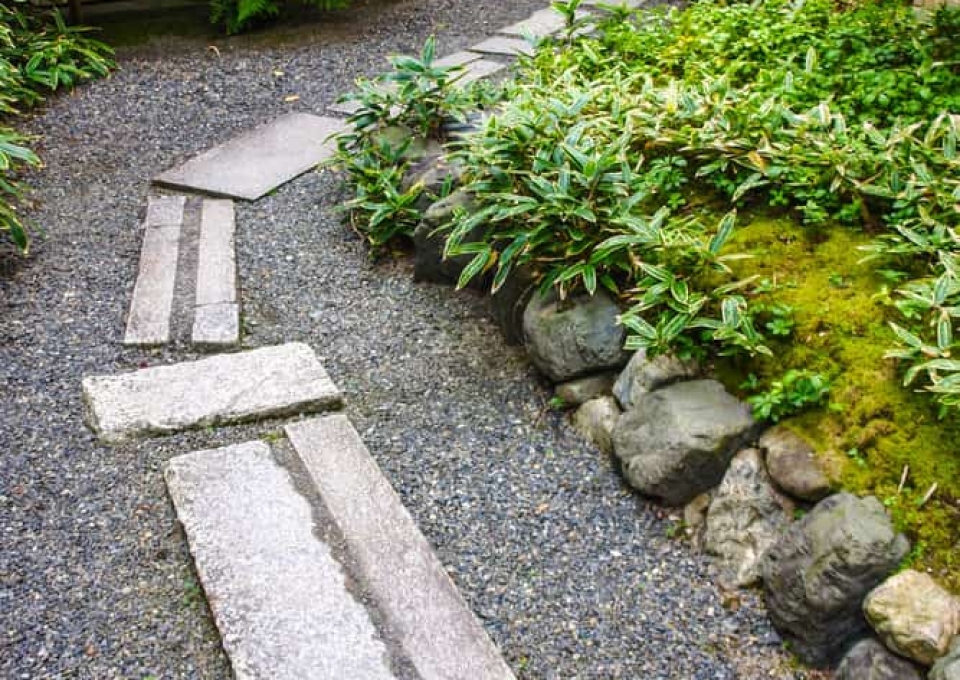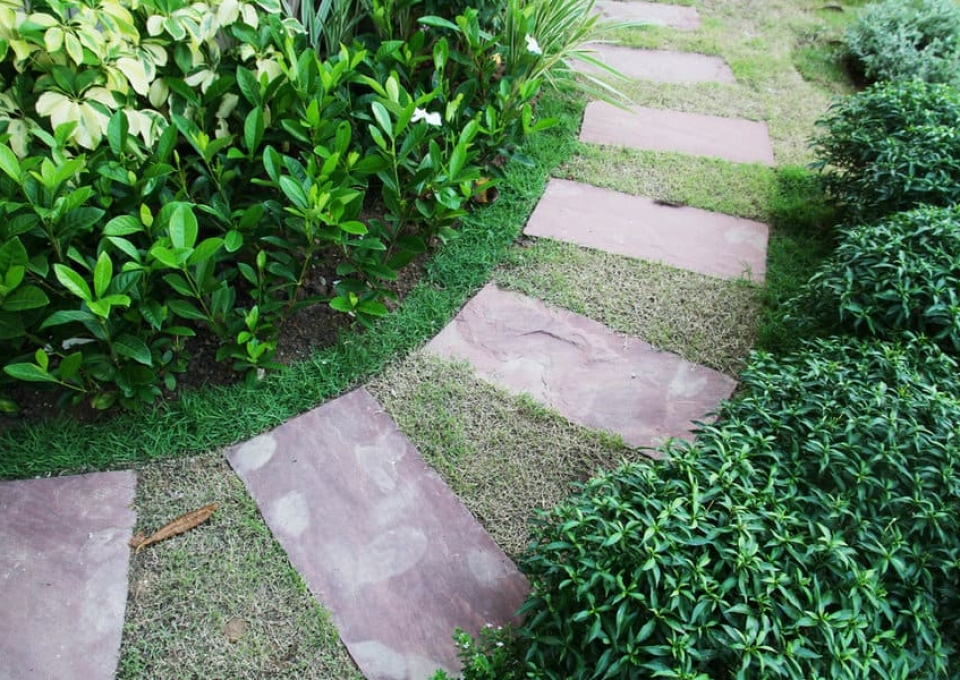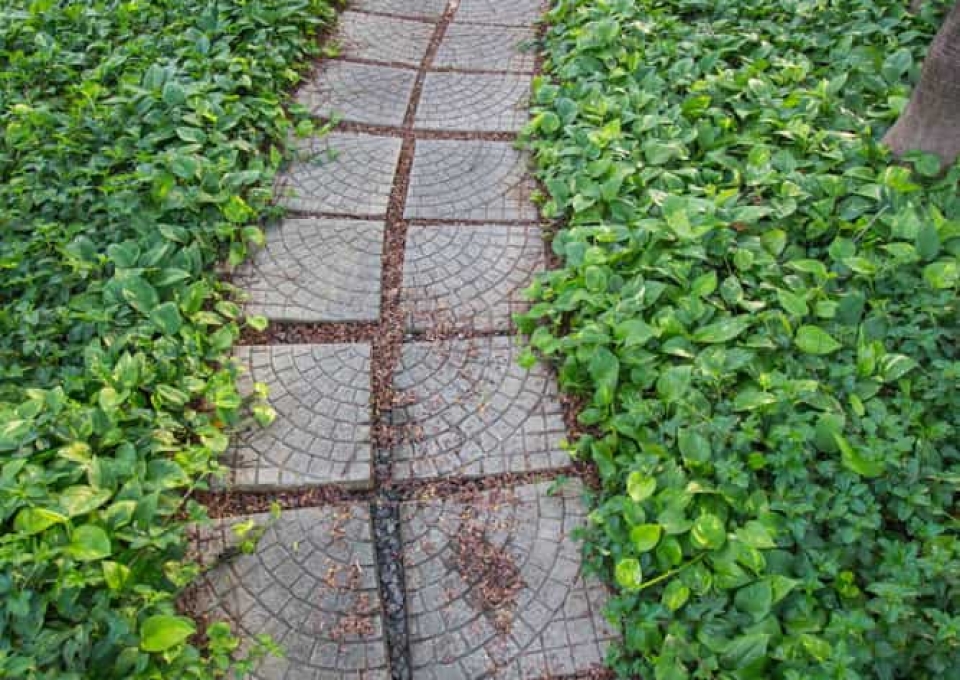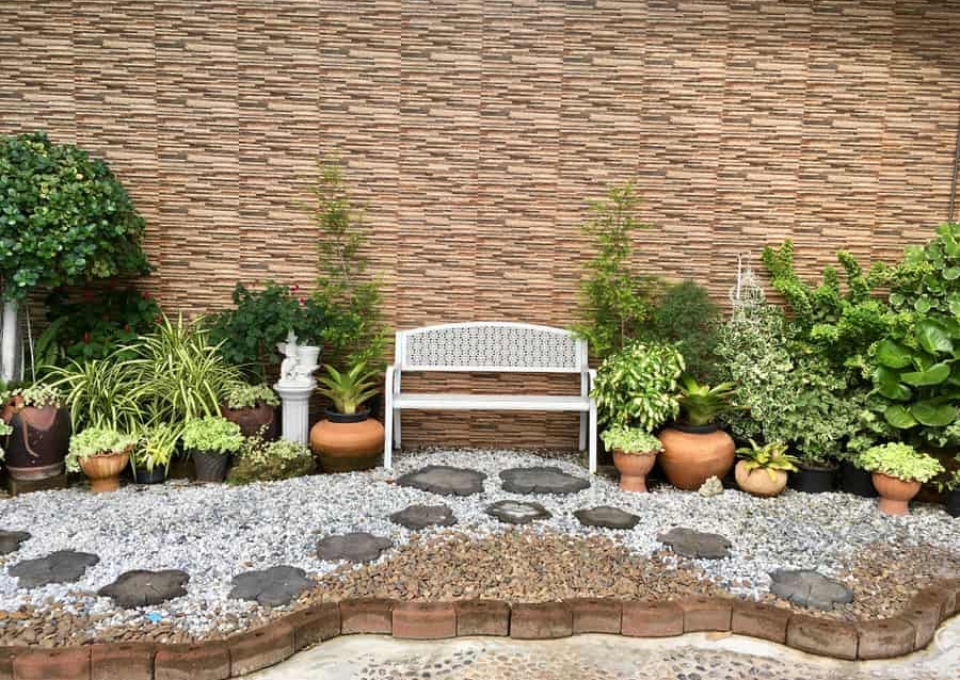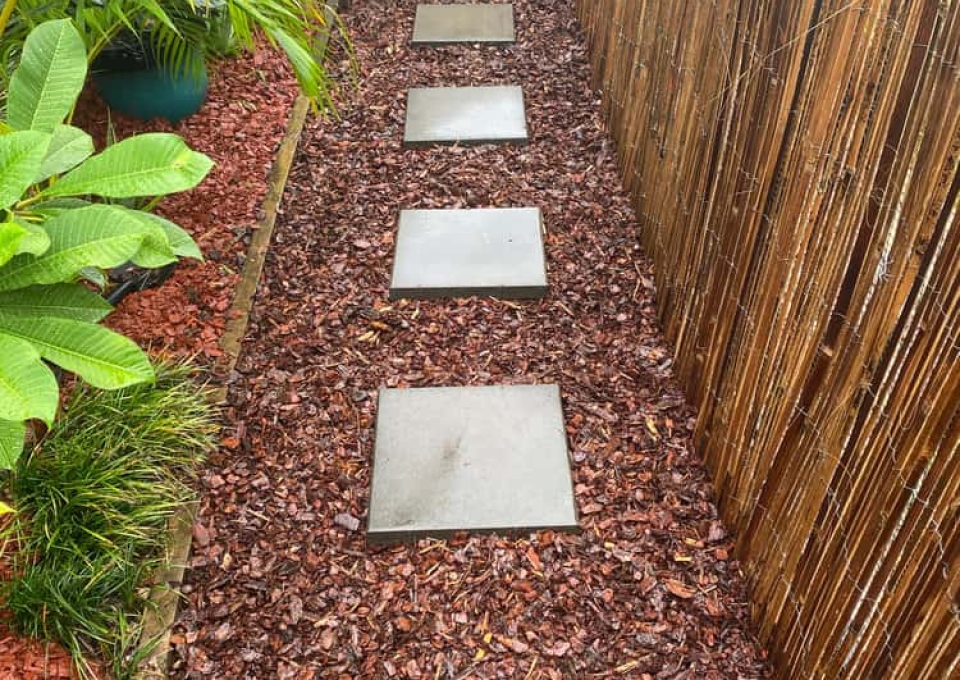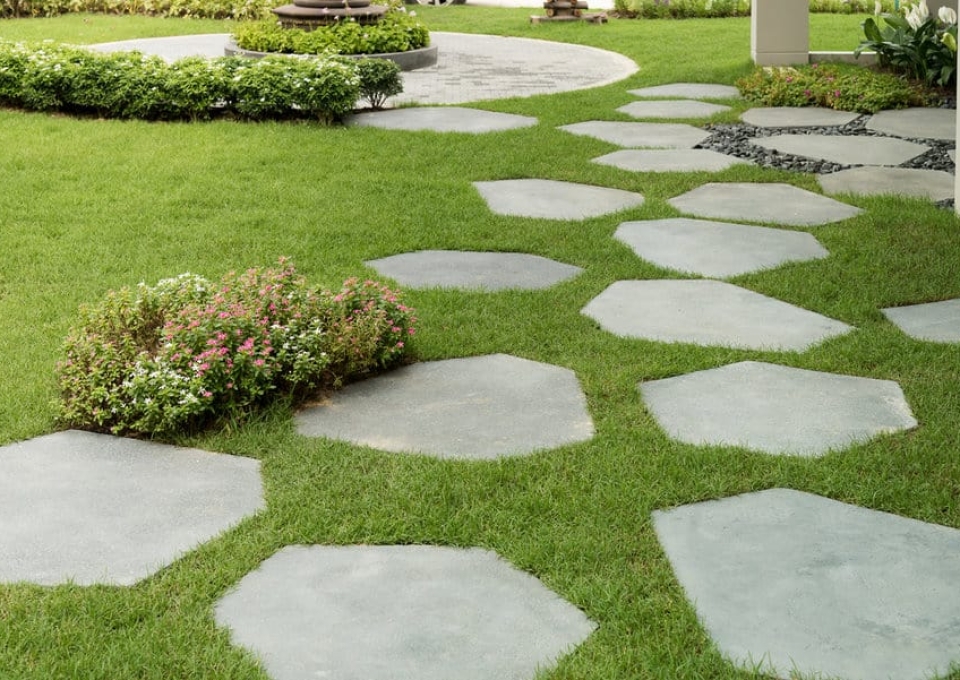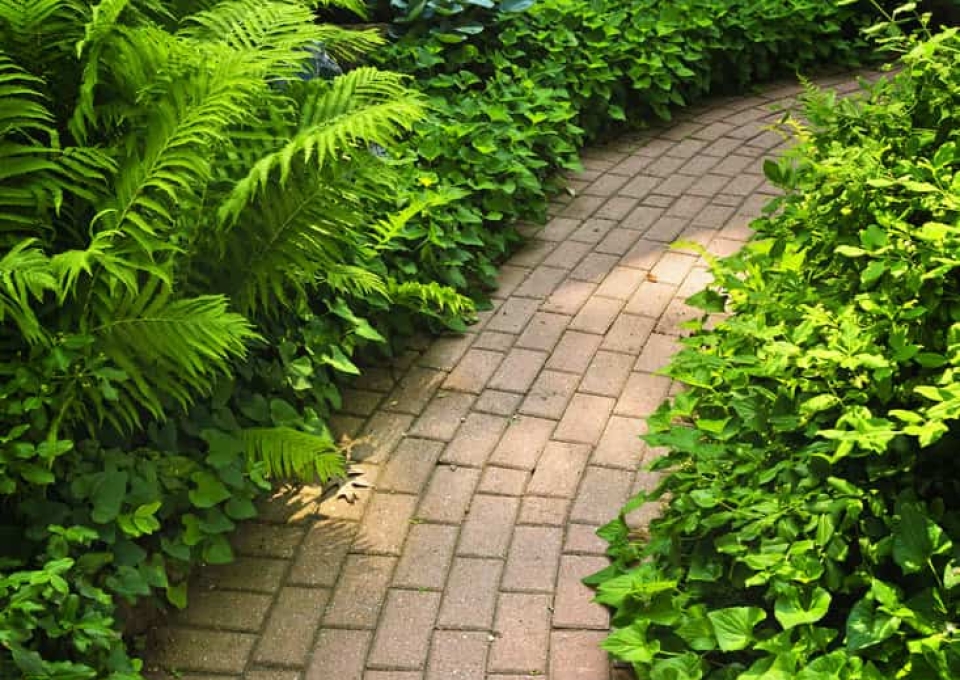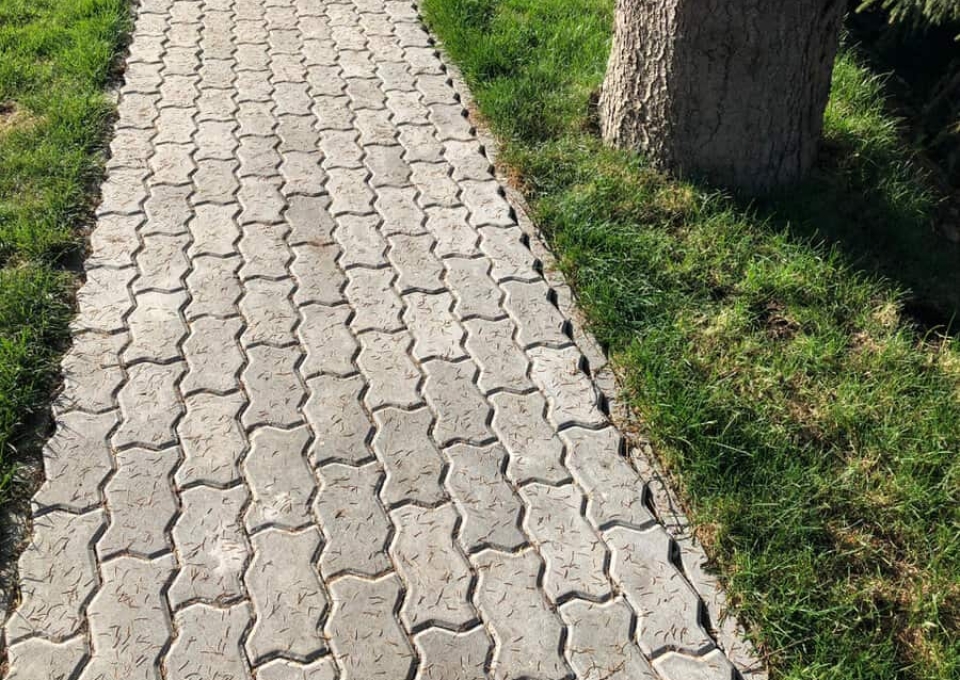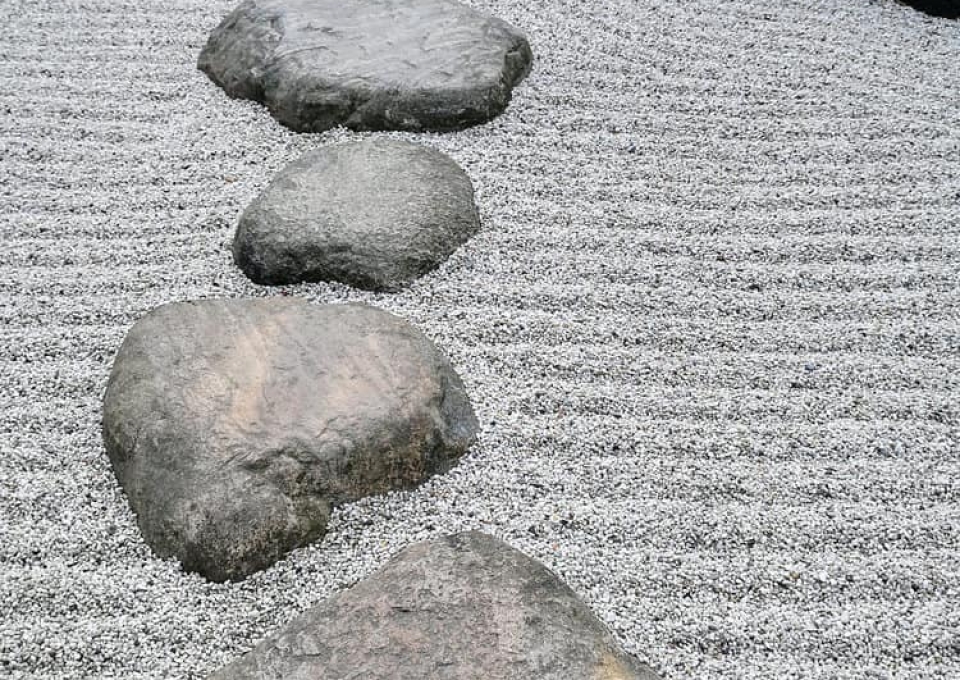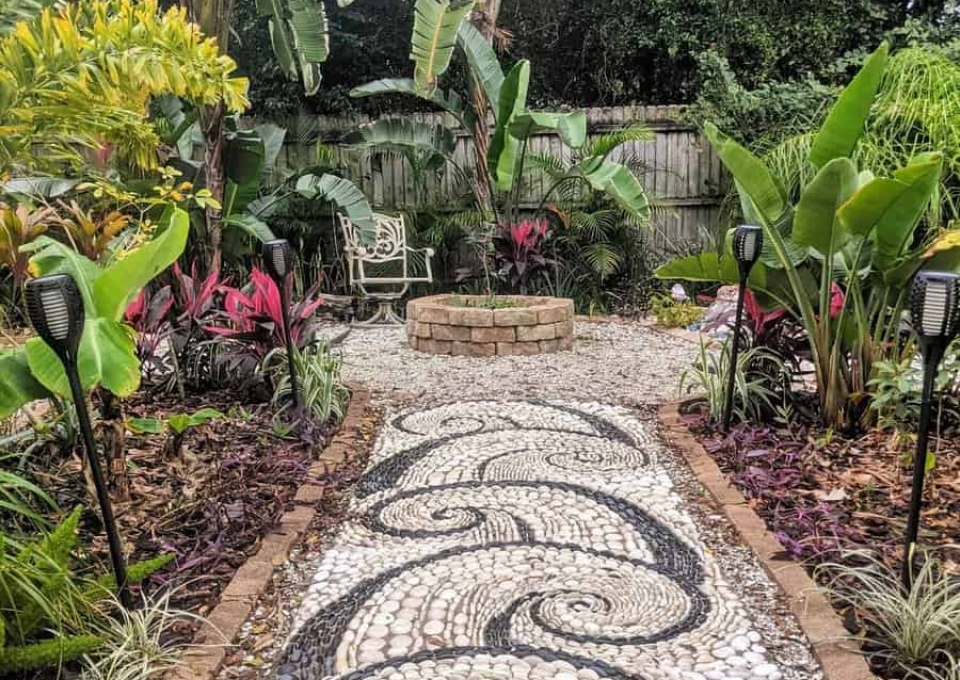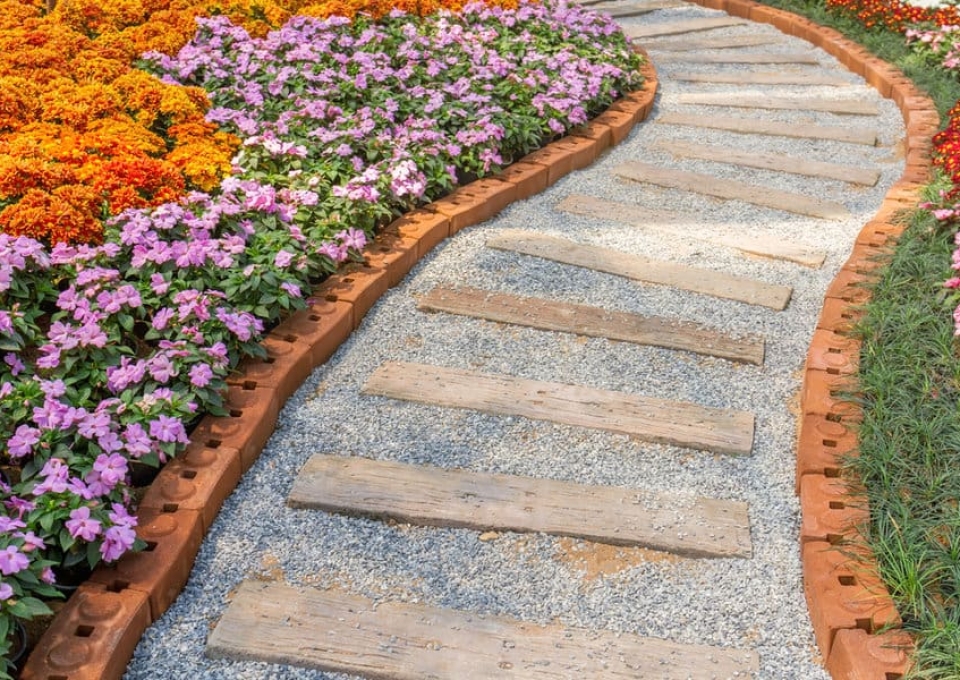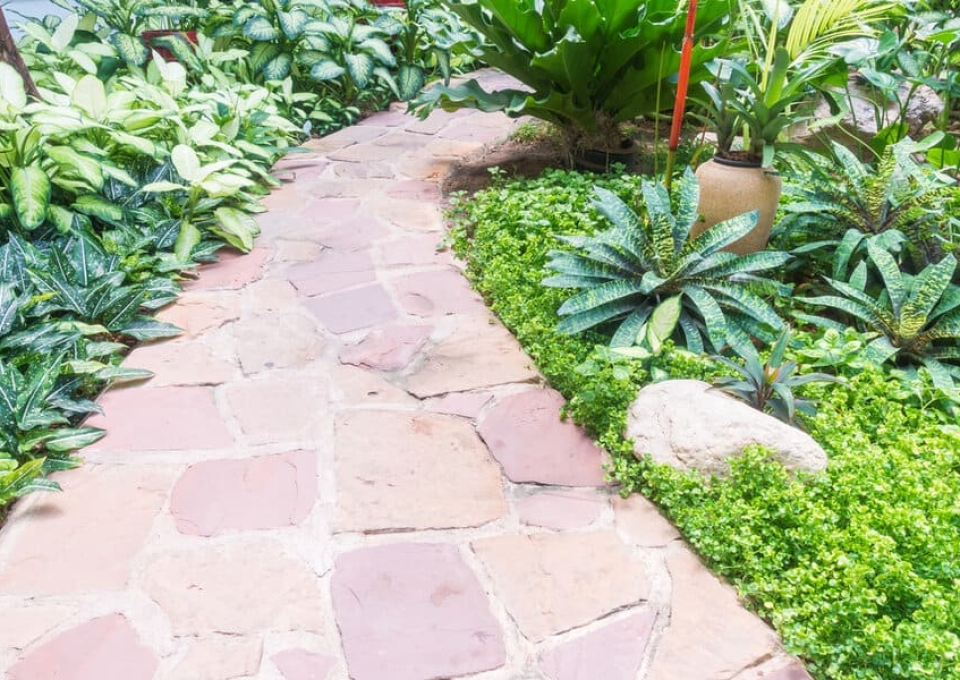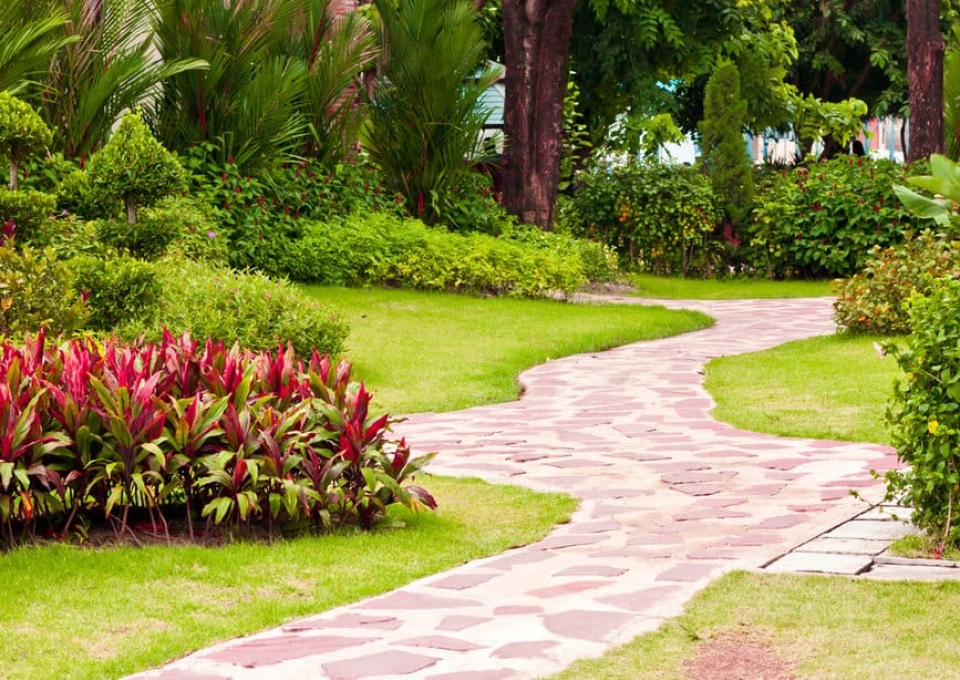Introduction to Garden Path Design
Contents

Importance of Pathways in Landscape Design
Pathways are essential in a garden, serving as practical routes and guiding the eye. They influence how visitors interact with the space, directing them through a planned experience of nature and design.
Overview of Different Types of Garden Paths
Garden paths can be made from various materials, each offering distinct benefits. Gravel paths provide a rustic look and are easy to install. Cut stone paths offer a sleek, elegant appearance and are durable. The choice of material should align with your garden style and maintenance needs. Whether you prefer winding or straight paths, selecting the right material can enhance the overall design and functionality of your garden.
Planning Your Garden Path

Assessing Your Space and Needs
Before starting, it’s essential to understand your garden’s layout and functional needs. Think about traffic flow and the path’s purpose: is it for moving wheelbarrows and tools, or for leisurely walks? These considerations will shape the path’s design and direction.
Choosing the Right Materials
- Gravel provides a satisfying crunch underfoot and a casual aesthetic, fitting well with most landscapes.
- Flagstone offers a natural, rugged appearance with unique color variations and shapes.
- Pavers are adaptable and available in various shapes and colors, ideal for a more formal look.
Considerations for Durability and Maintenance
Durability is crucial. Choose materials that can withstand your local climate and the amount of foot traffic. Maintenance is also key; some materials need more care than others. For example, gravel may require regular raking and replenishing, while pavers generally need less upkeep. Select materials that ensure longevity and are easy to maintain, keeping your garden attractive for years.
Benefits of Well-Designed Garden Paths

Enhancing the Aesthetic Appeal of Your Garden
A well-designed garden path not only serves a practical purpose but also enhances the visual appeal of your outdoor space. By using materials that match the surrounding plants and landscape features, these paths create a visually engaging experience.
Enhancing Accessibility and Functionality
- Well-placed paths ensure easy navigation through your garden, making every area reachable and welcoming.
- They create defined routes, protecting delicate plants from being stepped on and simplifying maintenance tasks.
Increasing Property Value
Investing in high-quality garden pathways can greatly enhance your property’s value. Prospective buyers often see well-designed landscapes as indicators of a well-maintained home, making your property more appealing in the competitive real estate market.
Design Principles for Garden Paths

Harmony with the Overall Garden Design
A garden path should seamlessly integrate with the garden, serving more than just a functional purpose. It should reflect the garden’s theme, whether it’s a tranquil Zen garden or a lively cottage garden. Choose materials and layout that match the garden’s style, ensuring a unified look that enhances the overall design.
Balance Between Functionality and Style
While aesthetics are important, a path’s usability is crucial. It should offer a stable and accessible route for everyone, combining practicality with elegance. This ensures the path is visually appealing and effectively serves its purpose, allowing smooth movement without compromising on style.
Use of Color and Texture
- Color is essential for setting the mood. Soft, earthy tones can create a calming atmosphere, while bold colors can highlight specific garden areas.
- Texture enhances depth and interest. The contrast between the roughness of natural stone and the smoothness of polished granite can significantly change the space’s feel.
How to Begin Your Garden Path Project

Essential Tools and Materials
- Measuring tape and garden stakes for accurate layout.
- Shovel and wheelbarrow for preparing the ground.
- Materials like gravel, flagstone, or pavers, based on your design.
Step-by-Step Guide to Laying a Garden Path
Start by outlining the path with stakes and string. Dig out the area to a depth of about 8 inches, and compact the soil to create a stable base. Add a layer of crushed stone for drainage, then a layer of sand for leveling. Place your chosen materials, using a rubber mallet to secure pavers or stones. Fill the gaps with sand or soil, and lightly water to settle everything in place.
Tips for DIY Projects and When to Hire a Professional
If you’re tackling a DIY project, ensure you plan and execute each step with care. For complex designs or heavy materials, consider hiring a professional. A skilled landscaper can provide precision and help avoid costly errors, making it a smart choice for intricate or large-scale projects.
Garden Path Design Ideas: Practical Tips to Enhance Your Outdoor Walkways
Pavers on Pebbles: A Symphony in Garden Design
Imagine a garden path as a masterpiece, created with pavers on pebbles. This design choice combines texture and elegance, guiding you through your own piece of nature. Solid pavers with the softness of pebbles create a balanced, natural look.
Design options are endless. Whether you like the clean lines of geometric shapes or the flowing curves of irregular stones, there’s a pattern for you. The color palette is just as diverse—think warm terracotta against green foliage or cool grays with vibrant flowers.
Different installation methods can change the path’s character. Some designs have pavers closely surrounded by pebbles, while others space them out, allowing plants to grow in between.
Subtle choices make a big impact. Choosing pavers with textures that contrast and complement the pebbles can turn a simple walkway into a garden highlight. Whether it’s a formal path or a casual footpath, these elements create both visual appeal and functionality.
Enchanting Alternating Stone and Grass Garden Paths
Step into a garden where stone and grass create a captivating path. Choose the right stone—whether it’s the rustic charm of flagstone, the sleek look of slate, or the classic feel of limestone—to build a durable path. Pair this with resilient grasses like Zoysia or Bermuda, which provide a soft, green touch.
Designs can vary widely. Consider:
- Geometric Precision—for a modern, sophisticated look.
- Whimsical Wandering—using freeform stones, bordered by creeping thyme or Irish moss.
These paths are more than just walkways; they guide you through your garden’s highlights. Enjoy the mix of hardscape and softscape, showcasing nature’s diverse beauty.
Enchanting Patterned Stone Steps for Garden Paths
Transform your garden path with patterned stone steps, turning each stone into a piece of art. These steps can feature various designs, from the precise lines of a herringbone pattern to the intricate details of mosaics. Choose stones that complement your garden’s colors or create a striking contrast for visual interest.
These stones not only create a path but also enhance your garden’s beauty. Whether set in mortar for durability or nestled among grass and gravel for a natural look, each stone adds to your garden’s unique story.
- Design Harmony Match the stones to your garden’s color scheme for a cohesive look.
- Installation Choices Choose between the lasting stability of mortar or the organic feel of earth.
- Guided Experience Use the stones to guide visitors through your garden’s hidden areas.
Landscape Buffer Steps for Garden Paths
Imagine a garden path that guides and pleases. Landscape buffer steps play a crucial role, providing both style and function. These steps help transition between garden levels and are made from materials like stone, wood, or decorative concrete that blend with the natural surroundings.
These steps not only connect different areas but also prevent erosion and encourage exploration. Think of the soft moss underfoot or the colorful ground cover beside each step. Each step is a part of your garden’s journey, offering a moment to pause and appreciate the surroundings.
Let these buffer steps serve as peaceful markers, guiding you through a thoughtfully designed landscape. With each step, engage fully with a garden meant to be experienced.

Wood Slab Steps: A Symphony in Your Garden
Imagine a garden where each step tells a story, with wood slab steps as the pages. These sturdy timber pieces, made from cedar, redwood, or reclaimed oak, add a natural elegance to your outdoor space.
The right finish protects the wood and highlights its patterns. Use a clear sealant to enhance the natural grain or a tinted stain to match your garden’s colors. Installing these slabs requires precision, ensuring stability, with the option of hidden risers for a ‘floating’ effect.
- Choose Your Timber Select from various woods to match your garden’s theme.
- Finishing Touches Decide between a clear sealant for grain enhancement or a stain to blend with your garden hues.
- Installation Artistry Secure each slab with precision, or opt for hidden risers for an enchanting ascent.
Square Garden Steps: A Modern Twist on Classic Pathways
Discover the sleek appeal of square garden steps, a design that blends modern style with the timeless charm of your garden. These steps make a bold statement, with their sharp lines contrasting the soft contours of nature. Choose materials that complement your surroundings—whether it’s the subtle elegance of natural stone or the minimalist look of polished concrete.
Colors are crucial; select soft greys to enhance the greenery or deeper shades for a more dramatic effect. The key to square step design is their arrangement. Space them precisely for a serene flow, or scatter them to create curiosity and adventure.
- Texture and Contrast Place them among pebbles or moss for a tactile experience, or let grass weave through for a whimsical touch.
- Harmony and Flow The steps become more than a pathway—they guide you through the beauty of your garden.
Integrating Concrete Steps into Your Garden Path
Imagine a pathway that not only guides you but also connects you to the essence of your garden. Concrete steps, when thoughtfully integrated, serve both function and aesthetics. Use texture and finish to harmonize these steps with the natural surroundings. A pebbled surface can mimic riverbeds, while stamped patterns can resemble stone.
Color is crucial. Earthy tones blend with the garden’s palette, and darker shades can highlight features like a pond. The width and placement of the steps should encourage a leisurely pace, inviting a reflective walk. Surround the steps with native plants to make each step a part of your garden’s narrative.
For inspiration, check Pinterest for a variety of concrete step designs. Aim to create a flow that guides visitors to a tranquil spot.

Scattered Freeform Steps for Enchanting Garden Paths
Step into a garden where each step is a new experience. Scattered freeform steps add natural elegance with their irregular shapes and varied textures, reflecting the beauty of the wild. Made from natural materials, these steps create a harmonious journey across a stone canvas.
These stones are more than just pathways; they invite you to explore, pause, and reflect. They contribute to your garden’s unique design, each one adding character to the story beneath your feet. As sunlight filters through, it creates dynamic patterns, turning your garden path into a living mosaic.
Imagine these freeform steps bordered by lush ground cover, providing a soft contrast to the rugged stone. Or see them leading to a hidden corner of your garden, a private retreat waiting to be found. The design possibilities are endless, limited only by your creativity.
Let your garden path showcase individuality, where the beauty of the unexpected is the only rule.
Black Garden Steps for a Contemporary Edge
Imagine a garden where each step makes a modern statement. Black garden steps create a striking contrast against the lush greenery of your outdoor space. Made from materials like sleek granite, textured slate, or wood stained in dark tones, these steps epitomize contemporary style.
The finish is crucial. Choose matte for a subtle, sophisticated look, or go for a polished surface to reflect the sky. This mix of textures turns your garden into a visual masterpiece.
Balance is essential. Complement your dark steps with light-colored pebbles or the soft hues of surrounding plants. This contrast of light and dark is visually appealing and guides you through your garden.
For a bold look, pair black steps with vibrant flowers. The colors will pop against the dark stone, creating a lively and inviting path.

Layered Steps Garden Path Ideas
Imagine stepping onto a garden path that rises and falls, guiding you through a lush escape. Layered steps are not just a way to move through your garden; they are a sculptural element that enhances the landscape. Made from durable materials like natural stone or high-quality composites, these steps ensure longevity and visual appeal.
Each tier is a deliberate feature in the garden’s design, highlighting a burst of blooms here or a serene pond there. The result is a captivating journey that becomes more engaging with every step, a blend of design and nature.
- Choose Your Material Opt for natural stone to blend with the environment or composite for durability.
- Design with Purpose Place steps to showcase garden highlights or create intimate spaces.
- Consider the Journey Let the path tell a story, building anticipation with each level.
Seamlessly integrated into the landscape, these steps are more than a pathway—they invite a multi-sensory experience, encouraging exploration.

Geometrical Steps Garden Path Ideas
Imagine walking through your garden on a path that’s more than just a walkway—it’s a geometric design. Geometrical steps combine modern design with functionality. The sharp angles and clear lines turn a simple path into a striking feature.
Hexagonal step stones create a strong visual impact, while rectangular slabs provide a clean, elegant look. The choice of material is crucial—consider:
- Polished Concrete: For a sleek, minimalist style.
- Natural Stone: To add warmth and texture.
- Glass: For a bold, contemporary feel.
Patterns emerge as these shapes repeat or alternate, guiding the eye and inviting you to follow. The result is a garden path that’s visually appealing and functional.
At dusk, integrated lighting can turn these geometric paths into a glowing feature. The interplay of light and shadow enhances the shapes, making your garden a captivating space at night.

Pebbled Floor with Stone Path Garden Ideas
Imagine a garden where each step offers a unique texture, blending nature’s elements seamlessly. Pebbled floors combine with stone paths to create a durable and attractive landscape. The smooth pebbles provide a comfortable walking surface, while the sturdy stones offer stability, forming a natural mosaic among lush greenery.
These paths serve a practical purpose beyond aesthetics. Pebbles aid in drainage, and stones ensure a stable walkway, making the garden both functional and beautiful.

Tiled Walk Path Garden Ideas
Imagine a garden path that bursts with color and texture, a dynamic ribbon winding through your personal Eden. Tiled walkways are not just practical; they are canvases for your creativity. From the understated elegance of ceramic to the earthy charm of terracotta, the possibilities are endless.
Let your garden’s color scheme guide your tile selection. Warm tones reflect the hues of nature, while vibrant colors make a bold statement. These paths are more than mere walkways; they are enduring invitations to explore, crafted to withstand time and weather.
Discover how to integrate these elements into your landscape for a result that is both functional and enchanting.
Herringbone Garden Path Ideas
Enhance your garden with a herringbone path, combining precision and artistry. This classic pattern, featuring zigzagging bricks, leads you through lush greenery with a touch of elegance.
Select materials that complement your garden’s colors. Warm terracotta or cool greys can either contrast or harmonize with your plants. At dusk, well-placed lighting can highlight the herringbone design, creating a captivating nighttime effect.
Each step on this carefully laid path adds balance to both traditional and contemporary garden styles.

- Material Harmony Select pavers that resonate with your garden’s color scheme.
- Nighttime Magic Install lights to showcase the herringbone’s allure after sunset.
- Enduring Elegance Enjoy the path’s durability, as it weathers the elements with grace.
Interlocking Pavers: The Symphony of Garden Path Elegance
Envision your garden path as more than just a walkway. Interlocking pavers turn it into a design masterpiece, seamlessly blending with nature’s beauty. The variety of patterns—whether the classic herringbone or the intricate spirals—creates a visually appealing rhythm. Materials like warm brick, modern concrete, and elegant stone add unique textures and colors to your garden.
With interlocking pavers, you control the color palette. Choose hues that complement the surrounding plants or create striking contrasts. These pavers are not only durable but also enhance your garden’s appeal, providing a long-lasting and attractive pathway.
- Pattern Play: Choose from classic to modern designs to guide the eye and feet.
- Material Matters: Select between the warmth of brick, the coolness of stone, or the sleekness of concrete.
- Color Your World: Pick natural tones or bold colors to personalize your path.
Oversized Rock Garden Path Ideas
Imagine a pathway that stands out, where each oversized rock acts as a significant feature. These large stones are not only visually appealing but also extremely durable, easily enduring time and weather.
With each step, you feel a connection—a tactile interaction between your feet and the natural textures. This path encourages a leisurely walk, allowing you to observe the thriving greenery in your garden.
Consider the colors of the stones, how they reflect the earth’s tones, and their shapes, as if sculpted by nature itself. These details create a seamless blend between the designed and the natural elements of your landscape.
Combining these large stones with groundcovers or moss achieves a balance. It’s a mix of strength and softness, creating a dynamic and evolving landscape.
Whether your path leads to a hidden garden or serves as a grand walkway, it is more than just a route. It is a statement of timeless elegance and the enduring beauty of nature.
Enhance Your Garden with a Multi-Colored Tiled Path
Imagine a garden path that tells a story with every step, a vibrant array of colors that draws you in. Each step reveals a new scene, showcasing the impact of a multi-colored tiled path.
Select tiles that match your garden’s colors but also include surprising pops of color. Mosaic patterns, with their interplay of light and shadow, add movement to the static greenery. Choose durable materials like ceramic or stone to ensure your path withstands the elements.
Create a walkway that serves more than just a practical purpose; it becomes a journey of discovery, reflecting your personal style.

Let’s flip a coin to decide if we should add a list.
- Harmony with Nature: Select tiles that mirror the garden’s natural tones and textures.
- Colorful Accents: Introduce vibrant tiles that capture attention and spark curiosity.
- Enduring Materials: Invest in quality ceramics or stones for longevity.
- Unique Patterns: Arrange tiles to form a distinctive and inviting path.
Patterned Pebble Garden Path Ideas
Imagine a pathway that tells the story of the earth beneath your feet. Patterned pebble paths offer a beautiful and practical design element for your garden. Choose pebbles in various colors, from river rock grays to desert sandstone tans, to complement your garden’s natural tones.
The size of the stones is crucial in creating pebble paths. Smaller stones allow for intricate mosaics, while larger pebbles can frame your walkway or create bold patterns. Lay designs that reflect the environment—ripples that mimic water or rings similar to those in ancient wood, celebrating nature’s diversity.
Looking for ideas? The balanced simplicity of a Japanese rock garden or the playful shapes in a Gaudi mosaic can inspire your design. Each step on your pebble path will enhance your garden’s aesthetic.
Enchanting Wood Garden Path Ideas
Step into a world where each wooden slat underfoot is a verse in the poetry of outdoor design. Wood garden paths weave a narrative of nature’s elegance, their rustic allure a seamless extension of the garden’s soul. Selecting the right wood—like the durable cedar or redwood—is a testament to both beauty and resilience.
Finishes are the artist’s touch on this natural canvas. Deep stains honor the wood’s legacy, while light sealants highlight its living grain. Imagine the enchantment of log cross-sections as stepping stones, or the serene geometry of planks amidst pebbles.
These paths are not merely walkways but evolving features of your garden, gaining character with each season. Crafted with intention, they become timeless passages in your personal outdoor retreat.
- Choose Your Wood Opt for cedar or redwood for their natural decay resistance.
- Finishing Touches Select from rich stains or protective sealants to enhance the wood’s charm.
- Design with Imagination From whimsical log slices to minimalist plank arrangements, the possibilities are endless.
- Embrace the Patina Appreciate how your path matures, reflecting the garden’s seasonal transformations.
Cobblestone Garden Path Ideas
Step into a garden where each cobblestone tells a story, guiding you through lush greenery. Imagine the charm of history beneath your feet, as cobblestones create a rustic and enduring path. These stones, arranged in patterns from intricate herringbone to random layouts, add visual interest that complements your garden.
Choosing cobblestones is an art—mix different hues and sizes to match your garden’s colors. Design with purpose, and your path will be both functional and aesthetically pleasing.
Proper installation is crucial; set cobblestones in sand or secure them with mortar for a stable walkway. Border your path with fragrant herbs or soft plants, making each step an olfactory pleasure.
Integrating cobblestone paths is about creating a practical and sensory-rich experience that enhances your garden’s beauty.
Granite Scrap Steps for a Unique Garden Path
Imagine a pathway in your garden that does more than guide your steps. Granite scrap steps transform walkways with their durability and eco-friendly appeal. These remnants, once discarded, now create a garden path that emphasizes sustainability and style.
Each granite piece, with its unique shape and size, forms a distinctive mosaic that captures sunlight and draws the eye. To blend seamlessly with nature, integrate greenery such as moss or ground cover, which softens the stone and enhances the natural look of your design.
Choosing granite scraps is not just a decision—it’s a commitment to lasting beauty that honors the past while paving the way for the future.
In Closing
Creating garden paths enhances both the look and functionality of outdoor spaces while increasing property value. Choosing the right materials and designs, like combining pavers and pebbles or using wood slab steps, results in inviting walkways that showcase personal style and the natural beauty of the surroundings. These paths serve as practical routes and key elements of landscape design, encouraging exploration and enjoyment. As we plan to transform our gardens, let’s use these ideas to develop harmonious, captivating, and durable outdoor areas that invite us to step outside and appreciate nature right at our doorsteps.

